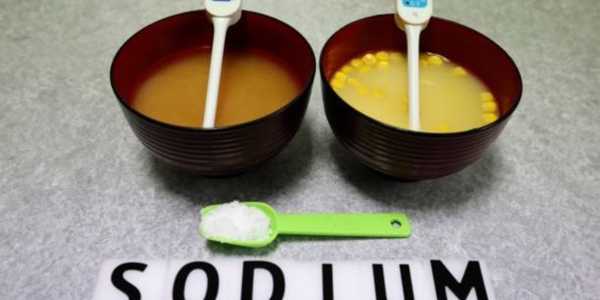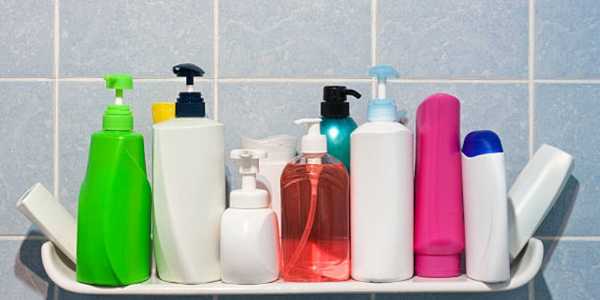How To Treat And Prevent Diaper Rash Effectively
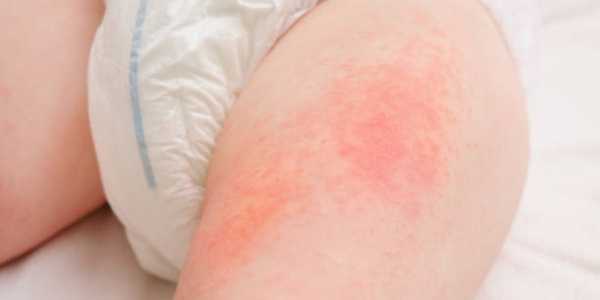
Diaper rash is one of the most common skin problems among babies and toddlers. It appears as red, inflamed skin in the diaper area and can cause discomfort if not addressed early. The rash happens when the baby's skin stays wet for too long, rubs against the diaper, or reacts to chemicals in wipes, soaps, or even laundry detergents.
Common Causes Of Diaper Rash
Diaper rash can appear quickly and spread rapidly if left unattended, especially in babies with sensitive skin, those with frequent bowel movements, or those taking antibiotics. Understanding the primary triggers can help prevent and effectively manage rashes.
1. Prolonged Moisture
Leaving a wet or soiled diaper on too long weakens the skin’s barrier, making it easier for irritation and rash to develop.
2. Friction and Poor Fit
Tight or ill-fitting diapers can rub against the skin, causing friction and breakdown of the skin’s protective layer.
3. Harsh Products and Allergens
New products, such as scented wipes, harsh soaps, or fragranced diapers, may trigger allergic reactions and irritation in sensitive skin.
4. Infections
A yeast (Candida) or bacterial infection can worsen diaper rash, especially in babies who have recently been on antibiotics. According to the Mayo Clinic , Candida fungus is a common cause in these cases.
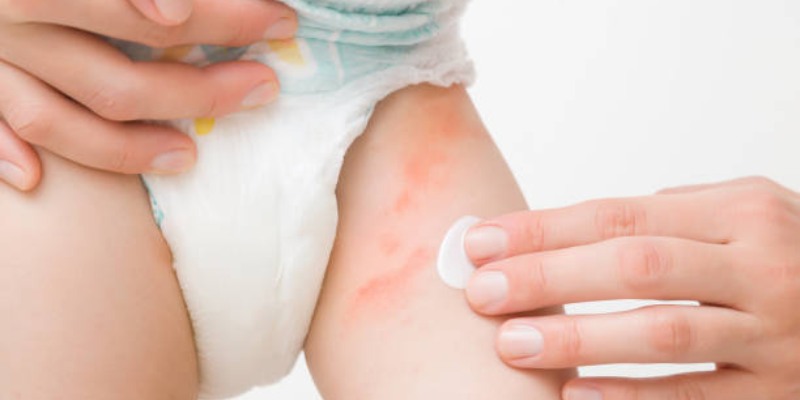
5. Diet and Food Sensitivities
Changes in your baby’s diet can also contribute to diaper rash:
When starting solid foods, the texture and frequency of stools change, sometimes leading to irritation.
Acidic foods, such as tomatoes or citrus fruits, may trigger rashes in some babies.
Breastfeeding mothers may find that certain foods in their diet affect their baby’s digestion, potentially leading to diaper rash.
To minimise food-related diaper rash:
Introduce new foods one at a time and observe for signs of rash.
If specific foods seem to trigger flare-ups, consider reducing or eliminating them and consult your paediatrician for guidance.
How To Treat Diaper Rash
1. Keep the Skin Clean and Dry
Change diapers frequently, especially when wet or soiled.
Use warm water and a soft cloth to clean the diaper area, rather than using scented wipes.
Gently pat the skin dry or allow it to air-dry before putting on a fresh diaper.
Allow daily diaper-free time to let the skin breathe.
2. Use Protective Creams
Apply a thick layer of diaper rash cream containing zinc oxide or petroleum jelly to protect the skin and lock out moisture.
Avoid powders like talcum powder, which can irritate your baby's lungs and do not help with healing.
3. Choose Diapers and Products Carefully
Select breathable diapers with fast-absorbing cores.
Avoid fastening diapers too tightly to improve airflow and reduce friction.
Use fragrance-free, mild soaps and wipes to avoid further irritation.
For cloth diapers, use dye-free, gentle detergents.
4. Know When to See a Doctor
If the rash does not improve within a few days or worsens, it may indicate an infection. Consult your doctor to check if an antifungal or antibiotic cream is needed.

How To Prevent Diaper Rash Long-Term
1. Maintain a Consistent Diaper-Changing Routine
Change diapers every 2–3 hours during the day, before bedtime, and upon waking.
Check diapers regularly, even when outside, and carry extra diapers, wipes, and a change of clothes.
Gently clean the diaper area with warm water or fragrance-free wipes, even after a wet diaper has been changed.
Pat the skin dry rather than rubbing before putting on a new diaper.
2. Allow Daily Diaper-Free Time
Allow your baby to spend time without a diaper each day on a clean towel or waterproof mat, allowing their skin to air out and reducing moisture exposure.
3. Apply Protective Ointments
If your baby is prone to rashes, apply a thin layer of zinc oxide or petroleum jelly with each diaper change to create a moisture barrier and prevent irritation.
4. Choose the Right Diapers and Products
Stick to fragrance-free, hypoallergenic diapers that are suitable for your baby's sensitive skin. If one brand irritates, try a different one.
Avoid diapers that fit too tightly, as they can trap moisture and increase friction.
If using cloth diapers, wash them with mild, dye-free detergent and rinse thoroughly. Avoid fabric softeners, as they leave residue that may irritate sensitive skin.
For additional guidance on baby skincare and diaper rash prevention, visit trusted resources such as HealthyChildren.org , published by the American Academy of Paediatrics.
When To Talk To a Doctor
Sometimes diaper rash does not clear up, even with home care. If the rash spreads beyond the diaper area, develops sores, oozes fluid, or if the baby has a fever, medical help is needed.
A healthcare provider may check if the rash is fungal or bacterial and recommend a safe treatment. Prescription creams, more substantial barriers, or oral medication may be prescribed for stubborn rashes.
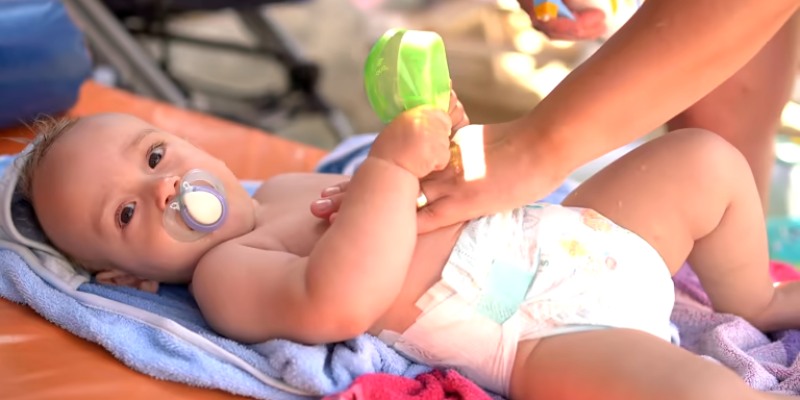
Diaper Cream Selection Guide For Sensitive Baby Skin
Key Ingredients in Diaper Creams
Mayo Clinic and HealthyChildren.org recommend using creams that are simple, protective, and fragrance-free.
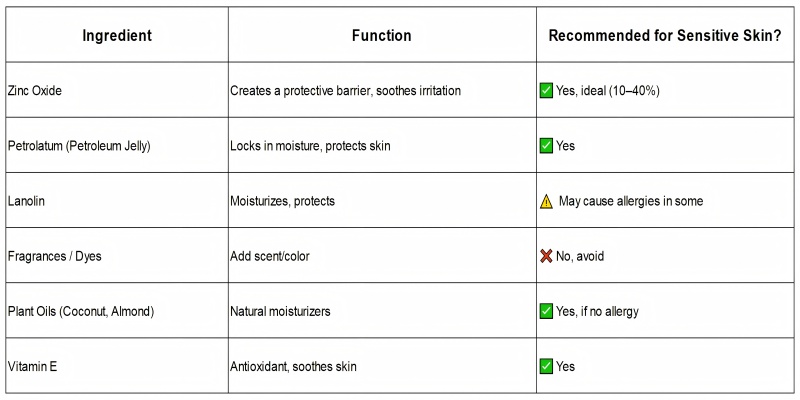
Pro Tip: Always patch test a small amount on your baby’s thigh to check for reactions if trying a new product.
Recommended Diaper Creams for Sensitive Skin
Based on recommendations from AAP and dermatology experts, consider these well-regarded options:
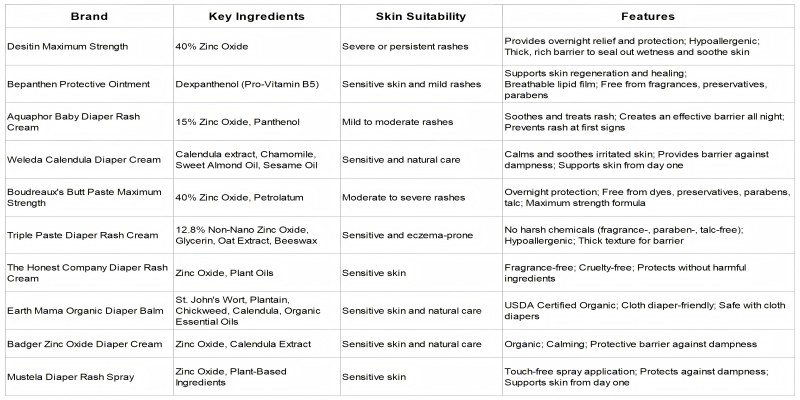
Choose fragrance-free, dye-free creams with zinc oxide or petrolatum for daily prevention and management of rashes.
Keeping Babies Happy And Rash-Free
A simple, consistent routine works best for healthy baby skin. Parents and caregivers who pay attention to how long a diaper stays on, how well the baby’s skin is cleaned, and what creams are used can reduce diaper rash worries.
Safe choices in baby wipes, diapers, and creams matter just as much as watching the baby’s diet. Staying alert to any changes in the baby’s skin helps catch a rash early before it becomes a bigger problem.









